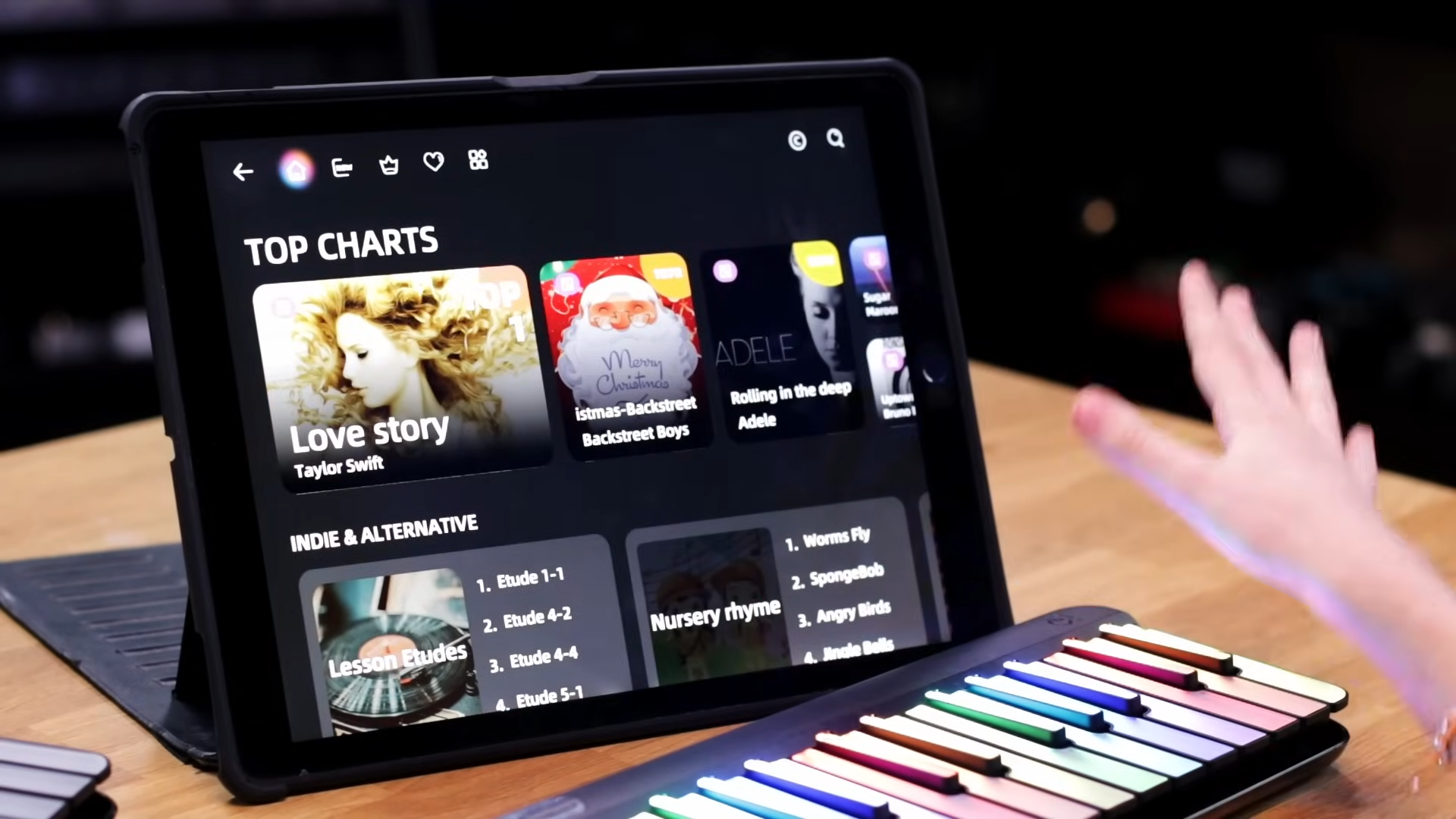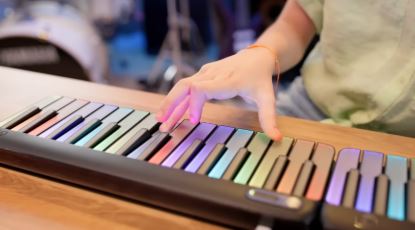Living with thin walls doesn’t have to stop your music. If you’ve been wondering how to practice piano quietly in an apartment, the good news is there are simple, affordable changes that keep practicing fun and neighbor‑friendly. This beginner’s guide covers quiet gear, sound‑reduction tricks, practice routines, and etiquette—so you can practice piano consistently without stress.
Why apartments amplify small noises
In shared buildings, sound travels in two ways:
-
Airborne noise: sound from speakers or the instrument’s built‑in sound system.
-
Structure‑borne noise: physical vibrations—key “thunks,” pedal taps, bench creaks—moving through floors, stands, and walls.
Even a “quiet” piano at home can bother neighbors below if the stand transmits vibrations. That’s why solving piano practice noise is partly about how you play and partly about what the instrument sits on.
Fast wins: the quiet setup checklist
These changes take minutes and deliver the biggest noise drop for practicing piano in apartments.
-
Use headphones. Any modern digital or smart keyboard will support them. Over‑ear closed‑back headphones block bleed and help you hear detail at lower volumes.
-
Lower key velocity sensitivity. Many instruments let you choose a “soft” touch curve so you don’t need to hit hard to get a full tone.
-
Decouple the stand. Put the stand legs on rubber pads or a folded yoga mat. Place a thick rug under the entire setup.
-
Quiet the pedal. Slip a mouse pad or thin felt under the sustain pedal to stop floor thumps.
-
Stabilize the bench. Felt pads under bench feet stop squeaks and vibration.
-
Angle away from shared walls. Set up diagonally in a room, not directly against a neighbor’s wall.
-
Keep everything within reach. Headphone hook, charger cable, music stand or tablet mount. If setup is fast, you’ll practice more quietly, more often.
Headphones 101: quiet practice, better focus

If you want to learn to play piano at night or during nap times, headphones are your best friend.
-
Closed‑back = most isolation for you and your neighbors.
-
Open‑back = more natural sound, but more leakage (better for daytime).
-
Volume discipline: if you turn headphones too loud, you’ll start pressing keys harder. Keep volume moderate and let the instrument’s dynamics do the work.
-
One‑ear monitoring: slightly lift one earcup to keep your touch light. You’ll naturally play softer when you hear the room.
Technique tweaks that cut noise instantly
Quiet gear helps, but how you play matters just as much when figuring out how to practice piano quietly in an apartment.
-
Float, don’t punch. Let your fingers “land” and keep wrists buoyant. Avoid bottoming out the keybed.
-
Soft release. Lift fingers gently so keys don’t snap back and click.
-
Use legato. Connect notes smoothly to reduce per‑note attack noise.
-
Light sustain. Press the pedal cleanly and release slowly to avoid thumps.
-
Practice mezzopiano. Make soft your default dynamic. You can still shape phrases without extra volume.
-
Finger substitution. Swap fingers while holding notes instead of re‑striking—keeps lines connected and quieter.
-
Two‑hand balance. Keep left hand softer than right; big left‑hand chords read as “loud” in small rooms.
Try five minutes of “whisper‑touch” daily: play an easy piece as quietly as possible while keeping even tone. It’s great control training—and your neighbors will love you.
Make your space quieter (no renovation needed)

You don’t need acoustic foam everywhere. Small, flexible changes reduce reflections and vibration for piano at home.
-
Rug + pad: a thick rug under the stand and bench absorbs footfall and pedal noise.
-
Soft furnishings: curtains, throw blankets, and stuffed bookcases soak up reflections.
-
Door sweep & draft stoppers: reduce sound leaking into hallways.
-
Furniture placement: Put a bookcase or couch between your setup and a shared wall.
-
Corner avoidance: corners amplify bass. Move your instrument 1–2 ft away from corners.
-
Case cover: when not playing, cover the keys to keep dust off; cleaner keys are quieter to the touch and less “sticky.”
All of this supports quieter piano practice without changing the room permanently.
Silent features on smart keyboards worth using

If your instrument has app‑connected features, use them to keep noise low while you practice piano:
-
Follow‑lights & “wait” mode: learn sections at very low volume—accuracy first.
-
Tempo slider: start at 60–70% and bump up by 5–10% only after clean runs.
-
Built‑in metronome: Two minutes with a click is better than twenty minutes of sloppy repetitions.
-
One‑tap chords: accompany your voice quietly (light touch + headphones) without hammering big left‑hand shapes.
-
Bluetooth/USB‑MIDI: compose silently in apps—your neighbors hear nothing but you’re building real skills.
If you’re shopping, look for a smart keyboard that supports headphones, app lessons, and quiet practice tools. Here’s one to explore: smart keyboard with guided learning.
A 7‑day quiet‑practice plan

This plan keeps sessions short and neighbor‑friendly while moving you forward. Aim for 15–25 minutes a day.
Day 1 — Setup & baseline
- Headphones, rug, pedal mat in place.
- Pick one familiar song. Play it once at whisper‑touch to find noisy habits.
Day 2 — Right hand only (quiet tone)
- 5 min metronome at slow tempo.
-
10–15 min right‑hand melody, no pedal, legato focus.
Day 3 — Left hand roots (soft landings)
- 5 min slow broken chords to practice smooth releases.
- 10–15 min left‑hand roots or simple triads, pedal down gently.
Day 4 — Hands together at 70%
- 5 min metronome; then combine parts quietly.
- Loop the noisiest bar 5–10 times.
Day 5 — Rhythm polish
- Add half‑note and whole‑note patterns (steady, soft).
- Record a 60‑second clip to check evenness at low volume.
Day 6 — Dynamics & pedal control
- Practice crescendos without increasing attack noise.
-
Pedal down/up slowly; eliminate thumps.
Day 7 — Share‑safe session
- Play through your song once at “apartment volume” (headphones on).
- Make a note of one tiny fix for next week.
Repeat weekly. You’ll grow your playlist quietly and confidently.
Neighbor etiquette that keeps the peace
A little communication goes a long way when deciding how to practice piano quietly in an apartment.
-
Choose friendly hours. Early evenings or mid‑day are safest if you play without headphones.
-
Post a tiny schedule. A note in the elevator or group chat like “Short practice M/W/F 6–6:30 pm” shows respect.
-
Invite a quick sound check. Ask the nearest neighbor, “Is this volume okay?”—and actually stick to it.
-
Keep it brief without headphones. Limit speaker‑on time to 10–15 minutes; do the rest in headphones.
-
Say thanks (and mean it). If someone mentions noise, thank them for telling you and adjust. Goodwill matters.
Troubleshooting: still getting noise complaints?

Try these additional fixes:
-
Switch stands. A solid X‑stand with rubber feet often transmits less vibration than a hollow furniture stand.
-
Relocate. Move your setup to the room with the fewest shared walls (often a bedroom).
-
Add mass. Place your stand on a heavy plywood board with a rug and pad under it to spread vibration.
-
Shorter sessions. Two 12‑minute sessions may disturb less than one 25‑minute block.
-
Silence “mechanicals.” Tape felt under bench feet, dampen pedal hinge with felt, tighten any rattling screws.
-
All‑MIDI mode. Practice with the instrument’s speakers off, monitoring only through headphones and your device.
A gentle next step
Quiet practice isn’t about playing timidly—it’s about control. With the right setup, touch, and routine, you’ll progress quickly and keep the peace. If you want a portable, apartment‑friendly instrument with headphones, guided lessons, and features built for quiet sessions, explore this smart keyboard or discover more learning resources.
Keep it soft, keep it steady—and enjoy the music you’re making.
Frequently Asked Questions
What’s the quietest way to practice piano at home?
Headphones on a digital or smart keyboard, soft touch, and decoupled stands. Keep pedals padded and use a rug.
Can I make an acoustic piano apartment‑friendly?
You can reduce noise with felt, rugs, and careful hours, but true “silent” practice is much easier on a digital/smart keyboard.
Do I need special headphones?
Any decent over‑ear pair works. Closed‑back helps most at night. Keep volume moderate to avoid heavy key attacks.
How to practice piano quietly without losing expression?
Focus on legato, soft releases, and dynamic shaping at low volumes. You can play musically without playing loudly.
What’s the best way to keep neighbors happy long‑term?
Predictable hours, quick sound checks, and lots of headphone time. Small courtesies build goodwill.


